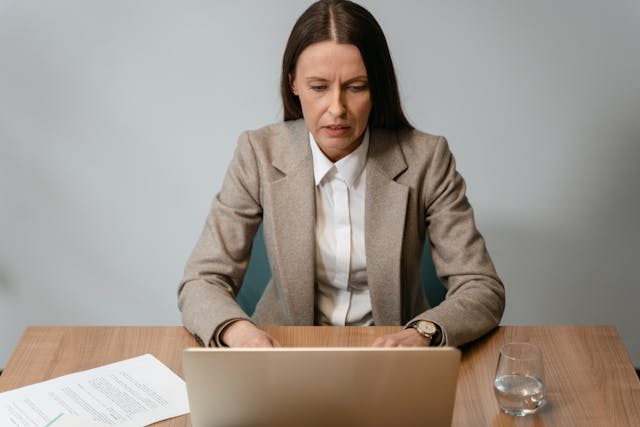
When a slip and fall incident occurs, it is vital to follow a legal checklist to protect one’s rights and guarantee proper handling of the situation. Evaluating injuries is a priority, even if they seem minor at first. Seeking immediate medical attention and reporting the incident to the property owner establishes a formal record. Documenting the scene and collecting witness information can strengthen a potential case. Each step in this process is indispensable, but there is more to ponder.
Assess Your Injuries
How does one begin to understand the true extent of their injuries after a slip and fall? It requires a mindful assessment, starting with the ability to determine pain severity. Each sensation needs careful attention—sharp, throbbing, or dull pain may all signal different injuries. Individuals must identify symptoms such as swelling, bruising, or the inability to bear weight. Recognizing these signs early can prevent further complications. A detached analysis, free from panic, is indispensable. This intentional and thorough self-examination guarantees that nothing is overlooked. Empathy for oneself is necessary, acknowledging that even minor discomfort should not be dismissed. By methodically evaluating the situation, individuals can accurately discern the nature of their injuries, paving the way for appropriate actions.
Seek Immediate Medical Attention
Even when injuries from a slip and fall seem minor, seeking immediate medical attention is essential to guarantee proper healing and prevent hidden complications. A thorough medical evaluation can uncover underlying issues that may not be immediately apparent, such as concussions or internal injuries. It is imperative for individuals to secure medical records for documentation purposes, as these records serve as critical evidence in any potential legal proceedings. Additionally, obtaining a detailed medical report from a healthcare professional provides an authoritative account of the injuries sustained, which is indispensable for substantiating claims. Prompt medical attention not only safeguards one’s health but also strengthens any future legal case, ensuring the injured party has a comprehensive and credible account of their condition.
Report the Incident to the Property Owner or Manager
To guarantee accountability and facilitate a prompt resolution, it is vital to report a slip and fall incident to the property owner or manager as soon as possible. By ensuring a report is made promptly, the injured party establishes a formal record of the event, which can be essential for any subsequent claims or legal processes. Notifying management immediately allows them to address potential hazards immediately, preventing further incidents and demonstrating a commitment to safety. This proactive step not only protects the rights of the injured individual but also fosters a cooperative atmosphere where resolution is prioritized. An empathetic, detailed account of the incident, shared with the appropriate parties, can pave the way for constructive dialogue and equitable solutions.
Document the Scene of the Accident
Why is it indispensable to meticulously document the scene of a slip and fall accident? This step is essential in preserving evidence which might otherwise vanish. Capturing photographs of visible hazards, such as wet floors, uneven surfaces, or obstructive debris, can substantiate claims, providing an unarguable depiction of the peril present. Equally important is to document environmental conditions, which might include lighting, weather, or any temporary obstructions that contributed to the incident. These elements could dramatically influence the case outcome by illustrating the context of the accident. A slip and fall legal expert can effectively use this detailed documentation to build a strong case. Detailed documentation reinforces the credibility of the claimant’s account, offering a comprehensive perspective that mere verbal descriptions cannot. Ultimately, such meticulousness guarantees that justice can be properly pursued for the injured party.
Gather Witness Information
How important is it to gather witness information promptly following a slip and fall incident? It is imperative, as witnesses can provide unbiased accounts that corroborate the victim’s experience. Obtaining statements from those who observed the accident ensures that critical details are accurately captured. Witnesses can offer valuable perspectives, recounting what occurred before, during, and after the incident. Their recorded observations might include environmental conditions or potential hazards that contributed to the fall. Securing this information immediately is vital, as memories can fade, and witnesses may become harder to locate over time. In pursuing a legal claim, having detailed witness accounts can greatly strengthen the case, offering a clearer picture of the circumstances surrounding the incident.
Preserve Evidence Related to the Fall
Following the gathering of witness information, attention must turn to preserving evidence related to the slip and fall incident. Capturing the scene is vital for substantiating claims. Individuals should take photographs immediately, ensuring they encompass every detail—wet floors, warning signs, and any contributing factors. These images provide a visual narrative that words alone may not convey. Additionally, obtaining video footage from nearby security cameras can offer an all-inclusive view of the incident. Prompt requests for this footage are necessary, as such recordings might be overwritten or lost over time. By meticulously preserving this evidence, individuals bolster their legal position, ensuring that the circumstances of the fall are indisputably recorded, fostering a fair assessment of liability and potential compensation.
Keep Detailed Medical Records
In the aftermath of a slip and fall incident, meticulously maintaining detailed medical records becomes an indispensable step for those seeking to substantiate their claims. Each document offers a precise account of the injuries sustained, serving as essential evidence. By keeping thorough records, individuals can effectively track recovery progress, providing a chronological narrative of their medical journey. This not only aids in understanding the trajectory of their healing but also guarantees that any setbacks or complications are documented. Additionally, these records are vital for monitoring medical expenses, offering clarity on the financial impact of the incident. Such diligence empowers individuals in negotiations or legal proceedings, highlighting the necessity of meticulous documentation in advocating for rightful compensation.
Notify Your Insurance Provider
In the wake of a slip and fall incident, it is vital to promptly report the event to one’s insurance provider to guarantee timely processing and support. Providing extensive details about the incident can greatly assist the insurer in evaluating the situation accurately and swiftly. Additionally, understanding the terms of coverage empowers individuals to better navigate the claims process, confirming they receive the benefits to which they are entitled.
Report Incident Promptly
When a slip and fall incident occurs, it is imperative to report the event to the insurance provider as promptly as possible to safeguard a seamless claims process. Immediate notification is vital, as delays can complicate or even jeopardize the claim’s validity. Prompt communication demonstrates responsibility and guarantees that all parties are aware, enabling a thorough investigation. It is advisable to notify authorities at the scene, as their presence can substantiate the incident’s legitimacy. Additionally, reporting details accurately to the insurance provider is essential. Precision in recounting the situation helps prevent misunderstandings and supports the credibility of the claim. Timely and accurate reporting not only facilitates a smoother process but also empathizes with the injured party’s need for resolution.
Provide Necessary Details
A crucial step following a slip and fall incident is providing the insurance provider with all necessary details. This guarantees a smoother claims process and assists in evaluating the incident’s legitimacy. One should meticulously review property conditions, documenting the scene with photographs, sketches, or videos. Any visible safety hazards, such as wet floors or uneven surfaces, should be clearly identified and described. Providing an exhaustive account of what transpired, including time, location, and witness statements, is essential. Such diligence paints a vivid picture, fostering empathy and understanding from the insurer. By offering precise information, the claimant strengthens their position, potentially expediting the settlement process. This proactive approach also underscores the claimant’s commitment to resolving the matter fairly and transparently.
Understand Coverage Terms
How well does one truly understand the intricacies of their insurance coverage? After a slip and fall incident, comprehending the terms becomes pivotal. Individuals must promptly notify their insurance provider, enabling the claim process to commence. It is crucial to review policy limits to guarantee adequate coverage for medical expenses and potential liabilities. An empathetic approach involves thoroughly analyzing coverage exclusions, which may impact the claim’s outcome. Many policies contain specific conditions that might exclude certain incidents, underscoring the importance of understanding these nuances. A thorough grasp of one’s policy empowers individuals to make informed decisions during stressful times. By skillfully maneuvering these terms, individuals safeguard their rights, ensuring they receive the protection and support they are entitled to.
Consult With a Personal Injury Lawyer
Why is it imperative to consult with a personal injury lawyer following a slip and fall incident? Engaging a lawyer guarantees that the injured party can review case details thoroughly, which is essential for constructing a robust claim. A skilled lawyer will meticulously gather evidence, including medical records and witness statements, to paint an accurate picture of the incident. Moreover, they will assess legal options, identifying potential avenues for compensation that the victim might overlook.
The complexities of personal injury law can be overwhelming, especially when dealing with insurance companies keen to minimize payouts. An experienced attorney will negotiate assertively on the victim’s behalf, ensuring fair treatment. In this challenging time, having a knowledgeable advocate provides peace of mind and increases the likelihood of securing rightful compensation.
Frequently Asked Questions
Can I File a Claim if the Accident Was Partly My Fault?
Even if the accident was partly their fault, they might still file a claim. Laws on contributory negligence and comparative fault determine eligibility and compensation, potentially reducing but not necessarily eliminating the claimant’s ability to recover damages.
How Long Do I Have to File a Lawsuit?
The statute of limitations dictates the timeframe for filing a lawsuit. It’s essential to seek legal consultation promptly to understand specific deadlines, ensuring rights are protected and opportunities for compensation are not lost.
What Compensation Can I Expect From a Slip and Fall Case?
In a slip and fall case, individuals can anticipate a reasonable settlement amount covering medical expenses, potential lost wages, and pain and suffering. Compensation often reflects injury severity and the incident’s impact on daily life and future earnings.
Will My Case Go to Trial or Settle Out of Court?
Settlement negotiations often lead to out of court resolutions, as both parties typically prefer avoiding the cost and time of a trial. However, if an agreement isn’t reached, proceeding to court remains a potential outcome.
How Do I Prove Negligence in a Slip and Fall Incident?
To prove negligence in a slip and fall incident, one must demonstrate the burden of proof by showing the property owner’s breach of duty of care, resulting in unsafe conditions directly causing the plaintiff’s injuries, warranting empathetic consideration.






